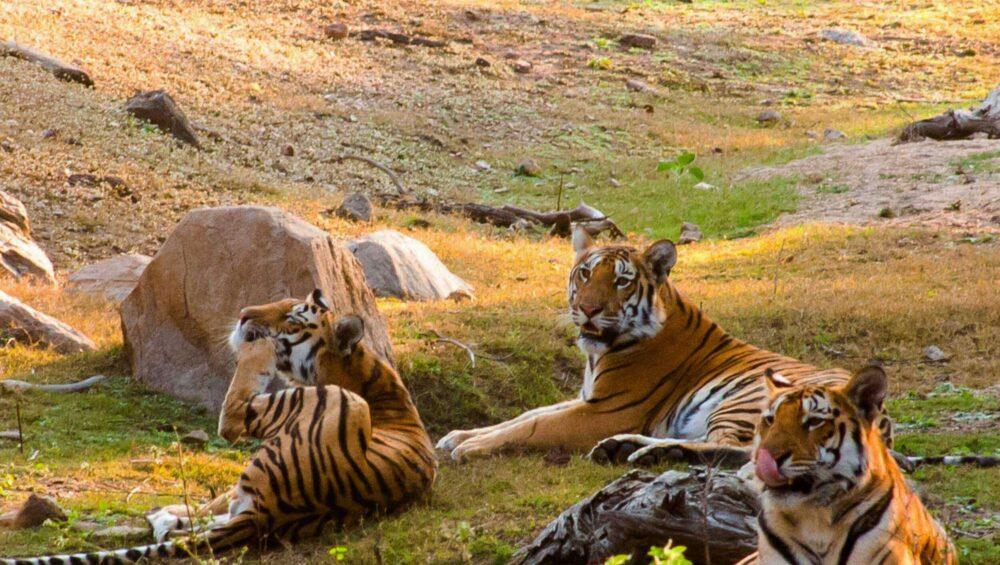Matkasur, also known as the legendary Matkasur Tiger of Tadoba, holds a prominent place in the annals of wildlife conservation and tiger conservation efforts in India. Tadoba Andhari Tiger Reserve, nestled in the Chandrapur district of Maharashtra, is renowned for its rich biodiversity and thriving tiger population, with Matkasur emerging as one of its most iconic and enigmatic residents.
Introduction:
Tadoba Andhari Tiger Reserve, spanning over 1,700 square kilometers of pristine forest habitat, is a sanctuary for a diverse array of flora and fauna. At the heart of this wilderness lies the majestic Matkasur, a tiger whose name evokes awe and reverence among wildlife enthusiasts and conservationists alike. Matkasur’s story is not only one of survival and resilience but also serves as a poignant reminder of the challenges facing India’s endangered tiger population.
Early Life and Background:
Matkasur’s origins remain shrouded in mystery, much like many tigers in the wild. Born into the dense forests of Tadoba, he likely embarked on a perilous journey fraught with challenges from the moment of his birth. The early years of a tiger’s life are fraught with danger, as they navigate the complexities of their environment and learn the skills necessary for survival.
As Matkasur matured, he carved out his territory within the confines of Tadoba’s lush wilderness, establishing himself as a dominant male within the reserve. His name, “Matkasur,” is derived from a local waterhole known as “Matka” where he was frequently sighted, earning him the moniker of the “Matkasur Tiger.”
Dominance and Territory:
Matkasur’s reign as a dominant male tiger was marked by his formidable presence and territorial prowess. Within Tadoba’s dense forests, he staked his claim to prime hunting grounds and strategic water sources, ensuring his supremacy over rival males and asserting his dominance within the ecosystem.
As a solitary predator, Matkasur’s territory spanned vast swathes of forest, encompassing diverse habitats ranging from dense woodlands to open grasslands. His keen senses and stealthy movements enabled him to navigate his domain with ease, hunting with precision and efficiency to sustain himself and maintain his dominance.
Encounters and Challenges:
Throughout his life, Matkasur encountered numerous challenges and obstacles that tested his resilience and adaptability. From territorial disputes with rival males to encounters with poachers and human-wildlife conflict, he navigated a perilous landscape fraught with danger and uncertainty.
One of the greatest threats facing tigers like Matkasur is poaching, driven by the illegal wildlife trade and demand for tiger parts in traditional medicine and luxury goods markets. Despite the efforts of conservationists and forest authorities to protect tigers and their habitat, poaching remains a persistent threat to their survival, highlighting the urgent need for enhanced enforcement and conservation measures.
Legacy and Conservation Impact:
Matkasur’s legacy extends far beyond his individual lifespan, serving as a symbol of hope and resilience for India’s endangered tiger population. His presence in Tadoba Andhari Tiger Reserve highlights the importance of protected areas and conservation efforts in safeguarding critical habitat and preserving biodiversity.
Through his story, Matkasur inspires renewed efforts to conserve and protect tigers and their habitat, fostering greater awareness and advocacy for wildlife conservation. His enduring legacy serves as a reminder of the vital role that tigers play in maintaining the health and integrity of ecosystems and underscores the urgency of addressing threats such as habitat loss, poaching, and human-wildlife conflict.
Conclusion:
In the realm of India’s wilderness, the legend of Matkasur, the tiger of Tadoba, continues to captivate the imagination and inspire awe. His story is one of survival, resilience, and the enduring struggle for existence in a rapidly changing world. As India’s tiger population faces mounting threats and challenges, Matkasur’s legacy serves as a beacon of hope and a reminder of the urgent need for concerted action to protect and conserve these magnificent creatures for generations to come.






